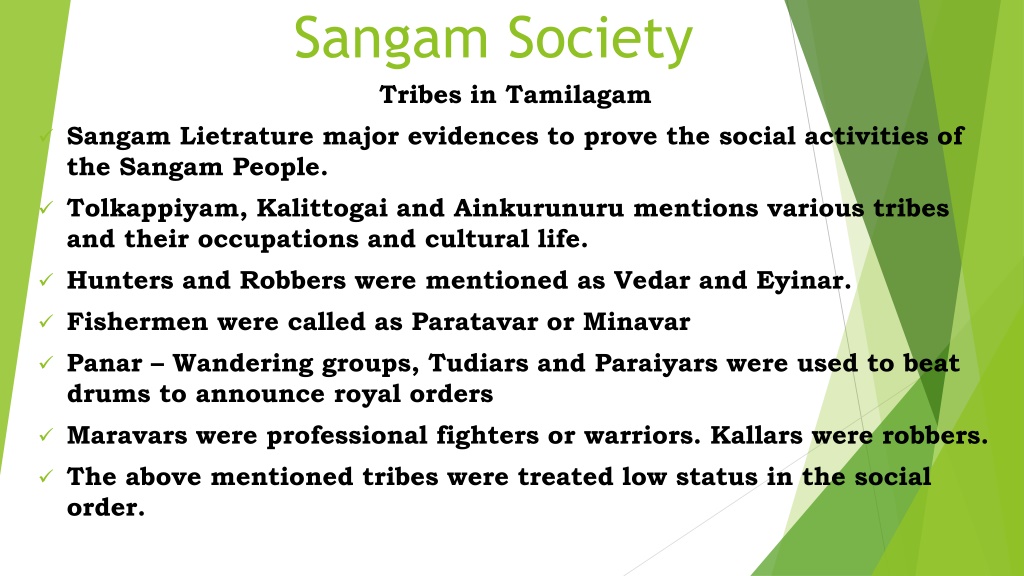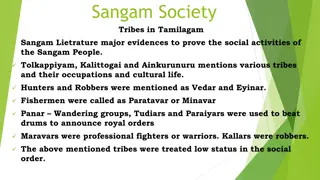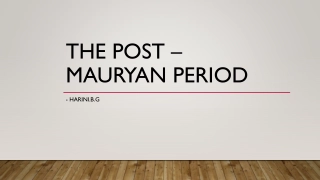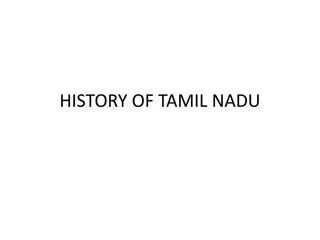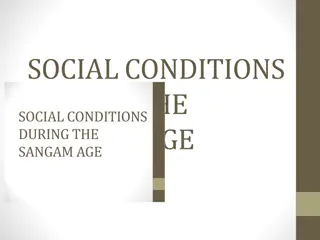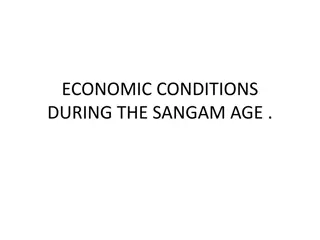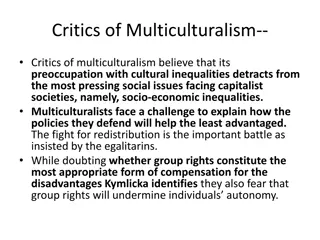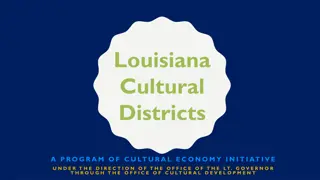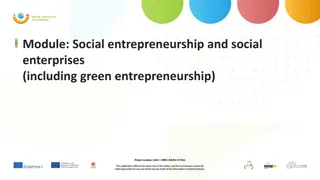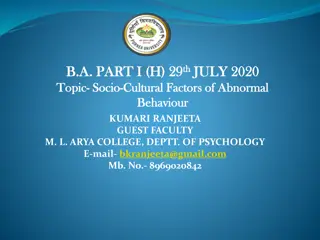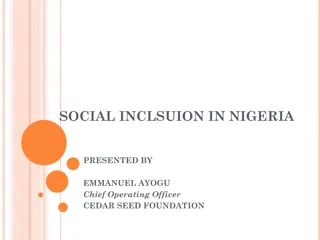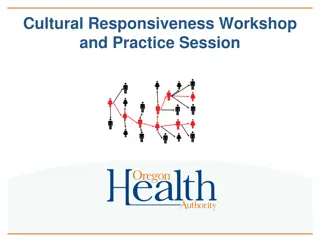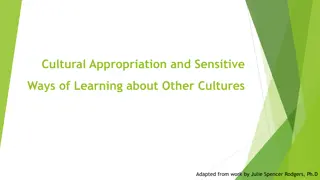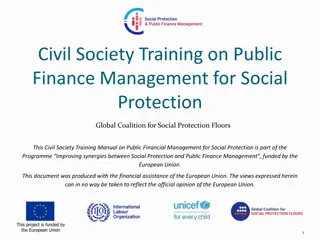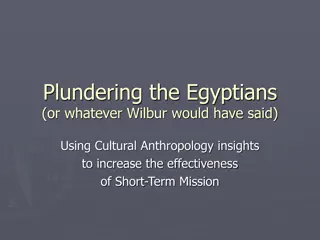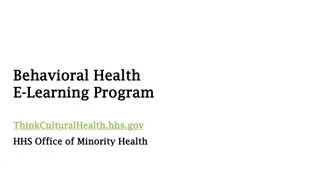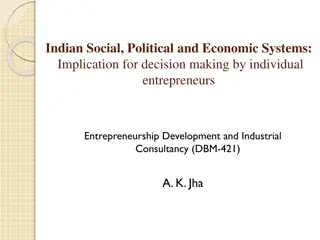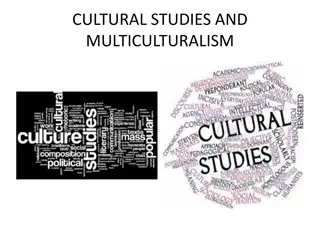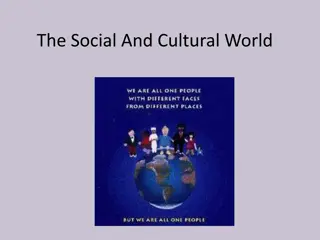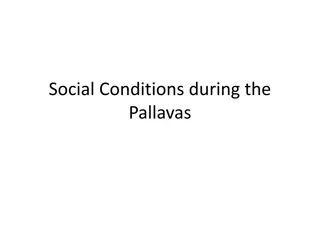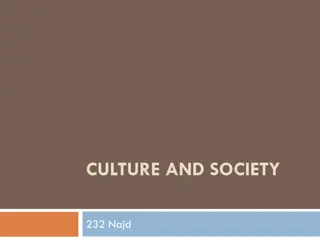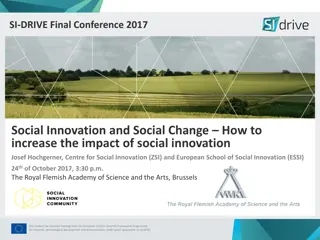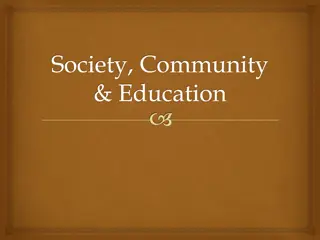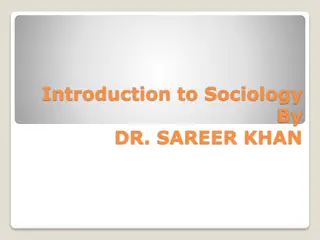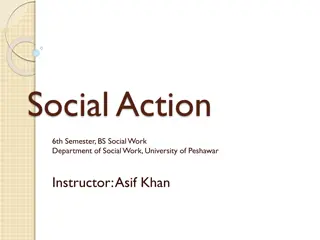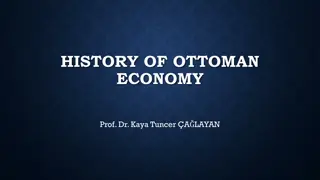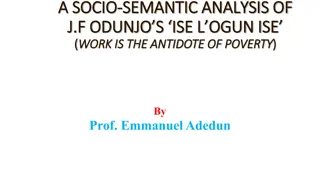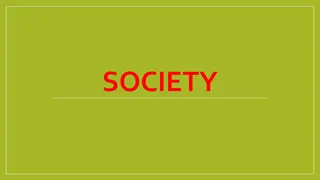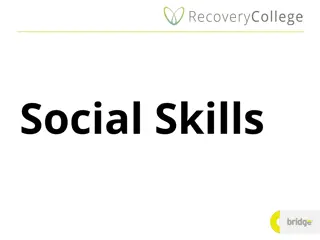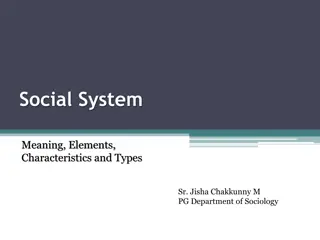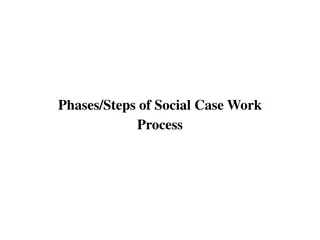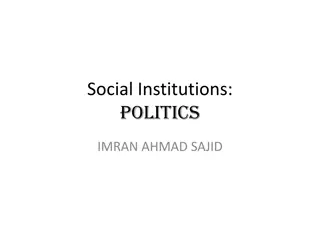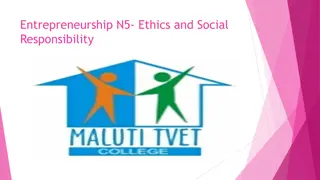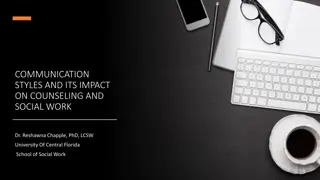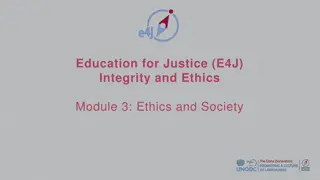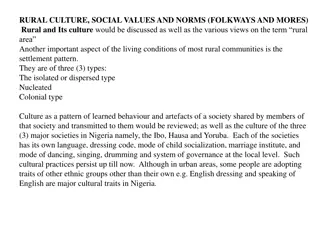Social Structure and Cultural Life in Sangam Society
Sangam literature provides insight into the social structure and cultural life of the Sangam people in Tamilagam. The tribes, occupations, and status of various groups such as the Brahmins, Vaisiyas, and artisans are highlighted. Despite the prevalence of arranged marriages and unequal treatment of women, unique customs like Kalavu marriages were practiced. The economy was primarily agrarian with kings holding significant land ownership. Widows and courtesans faced societal restrictions, reflecting the complex fabric of Sangam society.
Download Presentation

Please find below an Image/Link to download the presentation.
The content on the website is provided AS IS for your information and personal use only. It may not be sold, licensed, or shared on other websites without obtaining consent from the author. Download presentation by click this link. If you encounter any issues during the download, it is possible that the publisher has removed the file from their server.
E N D
Presentation Transcript
Sangam Society Tribes in Tamilagam Sangam Lietrature major evidences to prove the social activities of the Sangam People. Tolkappiyam, Kalittogai and Ainkurunuru mentions various tribes and their occupations and cultural life. Hunters and Robbers were mentioned as Vedar and Eyinar. Fishermen were called as Paratavar or Minavar Panar Wandering groups, Tudiars and Paraiyars were used to beat drums to announce royal orders Maravars were professional fighters or warriors. Kallars were robbers. The above mentioned tribes were treated low status in the social order.
Brahmins played major role and maintained supreme place in the social structure. Merchant Community Vaisiyas (Puhar was great city for Vaisiyas) Chetti commercial communities; Vellalas agriculturalists ; Umanars Salt manufacturers and sellers Kollan Blaksmith; Porkollan goldsmith Tachchan carpenter.
Status of Women Women were not treated equally with men Legal and social equality between men and women were rare Rarely women were respected and considered gods and were worshiped in temple. Cheran Senguttuvan, constructed a temple for Kannagi in 2ndcentury A.D Girls who attained the age were treated separately Importance given to karpu or chastity of women. Marriage Happiest occasion for all women Husband considered as God. Don t have rights to involve husband s decision making. Best example; Silappathigaram Character of women was given more importance.
Types of Marriages Ancient form of Marriage was known as Kalavu which mentioned in the Sangam literature. It is basic foundation of family life. Love was the basic of marriage but arrange marriage prevalent. Aintinai Kaikilai Peruntinai Tali symbol of marriage System of giving dowry was not prominent Child Marriage allowed or practiced (Kovalan (16) and Kannagi(12) married their very young age) Megasthanese mentioned his travel account about the child marriage prevalent in Sangam period.
Sati Tolkappiyam mentioned the custom of a wife killing herself immediately after the death of her husband. Widow treated very badly severe restrictions imposed on them. Eating of betal leaves was prohibited. Should wear pure white cloth and not allowed to attend any social functions. The Courtesans Known as Parattaiyar or Kanigaiyar. occupation prostitution experts in 64 arts Two Types 1. Professional prostitutes (lived separately Cheri-parattaiyar) 2. Kadar-parattiyar (expert in dance. only for pleasure, without entering into wedlock)
Sangam Economy King- owner of the entire land Agriculture was their main proffession Self-Sufficient society Major River: Palar, Pennar, Kaveri, Vaigai & Tamaraparani Tamil Society divided into rich, poor and intermediate class based on their wealth. Economy of Sangam age decided by the development of agriculture, nature of the industry, growth of trade and commerce.
Agriculture Chief occupation of the people Marudham land fit for agriculture Paddy chief products, coconuts, varieties of corn, plantains, sugarcane and cotton also. Owner of the land and tiller of the soil known as Vellalas. men who cultivated the soil Ulavar. His wife called Ulathy or Ulattiyar. Agriculturists had to pay tax (1/6 of the produce) to the king or govt. Tax relaxation natural calamities Brahmadhayam tax- free land or exempted from taxation
Industry Well developed in the field of Industries and crafts After Agriculture, Spinning and weaving were given importance. Women spent their spare time in spinning cotton threads Uraiyur and Madurai chief centres of Handloom industry. Kanchi- center of Textile industry. Dyeing industry was developed which closely connected with spinning and weaving. Produced high quality cotton, silk and woollen fabrics.
Silk, cotton, Wollen cloths were sold in Madurai city Exported to Ceylon, Burma, Malaya, Roman and greek countries Textile dealers were known as aruvai-vaniyar, (cutting the cloths into several pieces) Tailors tunikarans Pearl fishing another important industry in Pandyan kingdom. Rope making, manufacture of leather and bangles Fishing and salt manufacturing was the main occupation of sea- coast region.
Trade Internal Trade Biggest towns, there were established markets or bazaars. Two types of Markets: Nalankadi (morning market) Allankadi (evening market) Silpapadikaram gives detailed description of the markets in the city of Puhar. Internal trade was mainly based on the barter system. Paddy was the most commonly accepted medium of exchange. Textiles, Copper wares, wooden articles, gold ornaments, dolls, perfumes, flowers, salt, oil and fish. Traders were settled in separate streets. Traders association called Vanikachchattu or chambers of Commerce for protecting traders. Tolls were collected from cart.
Foreign Trade Great demands in foreign countries. Pepper, ginger, rice, turmeric, pearls, cotton fabrics etc. Brisk trade with foreign countries Commercial Contacts with Egypt, Rome, Burma, Malaya, Java, Sumatra and China. Strabo gave authentic information about the trade relations between Rome and Pandyan kingdom. Yavanas Roman traders initially settled in Puhar. Later they entred into royal services as body-guards, palace guards and guards in the military camps. Ship-building was a native industry. Ship called Marakkalam Pattinappalai harbour of Puhar
